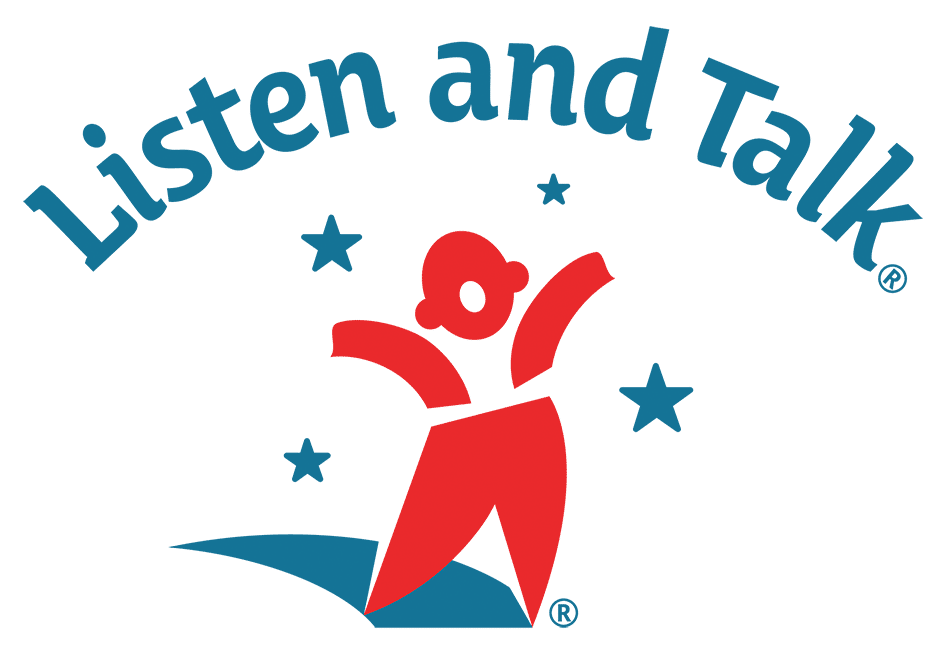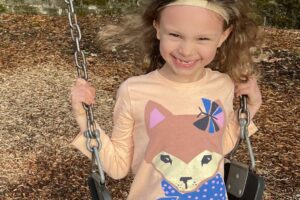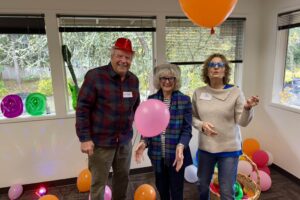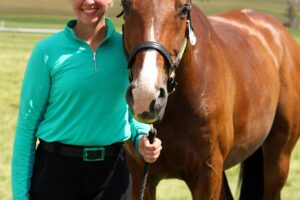
Tracking Turn-Taking (and more) with LENA
This past summer, you may have seen this adorable video of a father and his young son having a “conversation.” If you haven’t seen it, and you watch the video with the sound off, you might not realize that only one person in the video is using real words. Turn the sound on and you can see why this video went viral. While most people who watched (and re-watched) this video enjoyed how cute and funny the father/son duo was, those of us who work in the field of early childhood education knew that there was so much more to appreciate about this exchange.
The father is demonstrating the art of the “conversational turn,” which involves a back and forth interaction between him and his son. In this example, the child babbles in response to his dad’s comments and questions, and the dad continues the conversation as if the child is using real words. The seemingly insignificant conversation is actually quite meaningful.
This “serve and return” style of interacting, as it is sometimes called, plays an important role in both brain development and language development. In 2018, researchers at MIT, Harvard, and the University of Pennsylvania discovered that when children had high numbers of verbal conversational turns with adults, those children had stronger responses in areas of the brain related to speech and language development when a story was read aloud to them. The exciting takeaway from this study was that parents and caregivers, regardless of their education or income level, have the power to build the connections in their children’s brains that lead to language development by talking back and forth with them.
While this study focused on children who were 4-6 years old, conversational turns can happen at any age. Caregivers who talk back to their cooing infant are engaging in a conversational turn. Children who constantly ask, “Why?” after being given a less than satisfactory answer from an adult are participating in serve and return. Note to caregivers: Resist the urge to say, “Because I said so.” to those never ending “Why?” questions as long as you can. Keep that conversation going. Your child’s brain will be stronger as a result!
As one might expect from a program that strives to help children with hearing loss develop listening and spoken language skills, Listen and Talk’s Birth to Three Specialists spend time talking with caregivers about the importance of conversational turns and how to have them with children. We are thrilled when we witness caregivers engaging in these types of interactions during sessions, either naturally or after a bit of coaching, and hope that these conversational turns continue to occur in high numbers when we are not there.
You may be wondering how those researchers were able to track the amount of conversational turns between the parents and children in their study. They used technology called Language Environmental Analysis (LENA), which included a small recorder worn by the child for two days and software to analyze all of the information that was collected. Thanks to a generous donation from the Norcliffe Foundation, Listen and Talk’s Birth to Three program was able to purchase LENA technology in the fall of 2018, which has allowed us to track the amount of those brain enhancing conversational turns a caregiver has with a child and so much more.
How Does It Work?
Once a family completes a recording, cloud-based software analyzes the information and generates a report without a human being ever needing to listen to any part of the recording. The audio information is then immediately deleted. Not to fear caregivers…we’ll never hear you singing your child’s favorite song out of tune at the top of your lungs or become aware of the four letter word that slipped out of your mouth when you stepped on a Lego.
Once the analysis is complete, a report is generated, which details the following:
- Adult words spoken to or around the child
- Child vocalizations
- Adult-child conversational turns
- Audio environment details, such as background noise and distance from the speaker
This technology can be used with children as young as two months old because child vocalizations are tracked and not actual words. All of those coos and gurgles count. If you are enrolled in Listen and Talk’s Birth to Three program, your family is eligible to volunteer and receive meaningful feedback about your child’s listening and language environment!
Close to 30 families in our program have volunteered to use a LENA device over the past year. Collectively, those families have had almost 30,000 conversational turns with their children, and caregivers are learning what times throughout the day generate the most conversational turns. One parent discovered that conversational turns with her daughter peaked during the hour that they were preparing dinner together. After seeing their LENA report, that parent stated, “It was helpful to note that quality conversational turns can take place during normal, daily routines.” For this parent it was a relief to know that sitting on the floor and playing with toys was not the only way to encourage those important back and forth exchanges. Prepping dinner with your child may not generate the most conversational turns in your household, but a LENA report will help determine what does. At Listen and Talk we believe in using a strengths-based approach to coaching families. LENA reports help us understand how often caregivers are promoting a good listening and language environment for their child. We then coach caregivers to build upon their strengths throughout the entire day.
While tracking conversational turns is important, LENA technology also provides valuable information related to the child’s listening environment, which is necessary to consider when expecting children with hearing loss to develop listening and spoken language skills. The audio information that is collected is put into the following categories:
- Meaningful (speech that is near and likely clear)
- Distant (speech that is far away)
- Overlap (e.g. two people talking at the same time or a person talking with the TV on)
- TV/Electronic
- Noise (e.g. blocks crashing down)
- Silence
By looking at the audio environment, we can see how ideal or challenging listening environments positively or negatively affect the child’s vocalizations and conversational turns. One family discovered that when listening environments became more challenging for their child, such as a big family gathering or attending a church daycare for a few hours, the child’s vocalizations and conversational turns dropped significantly. Information such as this can help justify appropriate accommodations including smaller class sizes in preschool settings or the use of a DM system, which is a microphone worn by the speaker that sends the adult’s voice directly to the child’s hearing technology at a slightly louder level.
Whether you’re convinced that LENA technology is something your family would like to try, or you are interested and need more information, make sure to talk with your Birth to Three Specialist to get that conversation going. You can also find more information on our website at listentalk.org/LENA.
Questions or comments about this post? Email lindsayj@listentalk.org.



